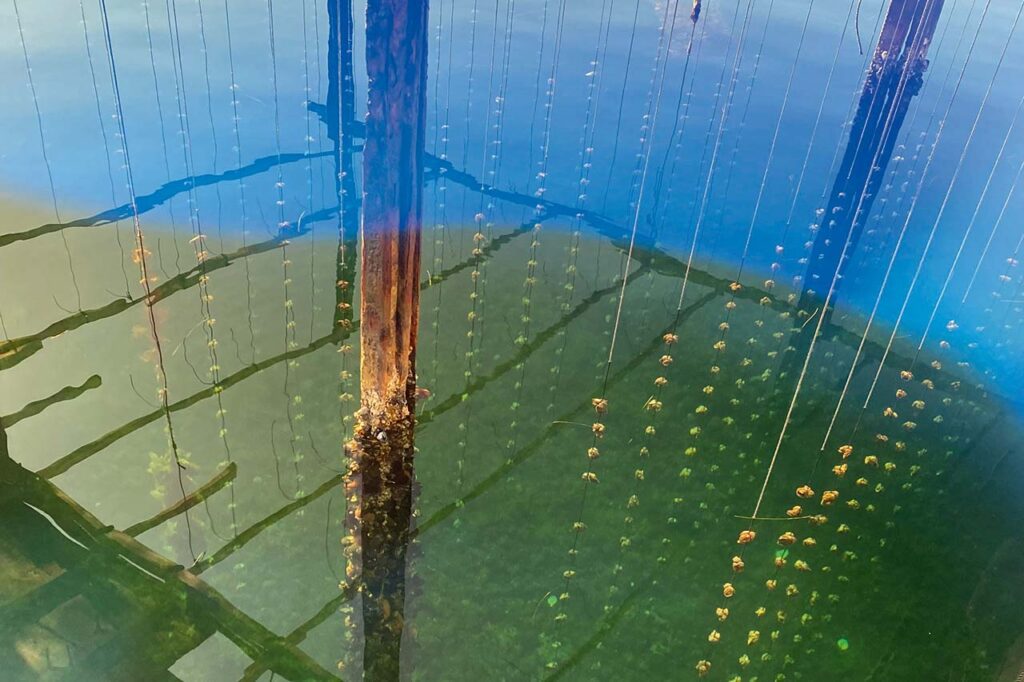[LUM#18] Thau, mirror of the future
With its 6,900 hectares of salt water, the Thau Basin is the largest coastal lagoon in Occitanie and a mecca for shellfish farming. Today, this activity is under close scrutiny due to the effects of climate change, which has already impacted the fragile balance of this small inland sea.

The summer of 2018 will long be remembered by shellfish farmers in the Thau lagoon. That year, abnormally high rainfall in winter and spring, followed by scorching temperatures and a lack of wind caused what's known as a "malaïgue", bad water in Occitan. Deprived of oxygen for several days, the lagoon suffocates, and the shellfish with it. " 100% of the mussels cultivated in the basin died, as did 30% to 40% of the oysters, representing a dry loss of 6 million euros ," explains Franck Lagarde.
A phenomenon of exceptional intensity, which highlights the fragility of this unique ecosystem. " The Etang de Thau, this small inland sea, is a veritable open-air laboratory in which the future can be read," explains the Marbec* laboratory researcher. For in the lagoon, average annual water temperatures have already risen by 1.6 degrees in the space of 20 years.
Fragile balance
With warmer waters and the intensification of rainfall events in the Mediterranean basin, the pond's fragile equilibrium is under threat, and an entire economic sector is being called into question. For there will be more malaïgues to come. " The risk of anoxia is multiplied by 3 for each degree of increase in the lagoon's water temperature, as shown by the work of my colleague Valérie Derolez ", Franck Lagarde points out. Faced with these prospects, professionals, researchers and politicians are joining forces to safeguard the lagoon and its uses. " The good news is that everyone in the basin is working together to adapt new farming practices and mitigate the effects of climate change.
For the specialist, the pond's resilience also depends on maintaining efforts to ecologically restore the ecosystem and its biodiversity. To start with, we need to restore the eelgrass beds, the seagrass meadows that provide oxygen and limit the risk of malaria. " We also need to encourage the return of ingenious species that were historically present in the pond but have now disappeared, such as the flat oyster and the European clam, which oxygenate the sediments and promote the flow of water and biodiversity ," adds Franck Lagarde. These ways of rehabilitating the ecosystem are nature-based solutions that will strengthen it in the face of tomorrow's more intense stresses.
"Will there be a limit?"
Efforts are also needed from the shellfish industry, which can also contribute to this rehabilitation, " for example by further improving the cleanliness under the tables to limit the presence of plastic waste, pieces of net or piles of oyster bags and polyethylene ropes. Each plot of land must be kept clean to allow the return of this precious biodiversity ". These individual and collective efforts help the lagoon's resilience, " as demonstrated by the absence of malaigue in 2022, despite hydroclimatic conditions deemed particularly sensitive ".
What to see:
- An animation by Valérie Dérolez illustrating the restoration trajectory of the Thau Lagoon, entitled "50 ans d'Observation pour Comprendre la Dynamique de Restauration et la Résilience de la Lagune de Thau".
Listen to :
- In A l'UM la science, Caroline Montagnani, Ifremer researcher and director of the IHPE** unit, talks about oyster vaccination against ostreid herpesvirus.
*Marbec (UM, IRD, CNRS, Ifremer)
**IHPE (CNRS, Ifremer, UPVD, UM)
UM podcasts are now available on your favorite platforms (Spotify, Deezer, Apple podcasts, Amazon Music...).